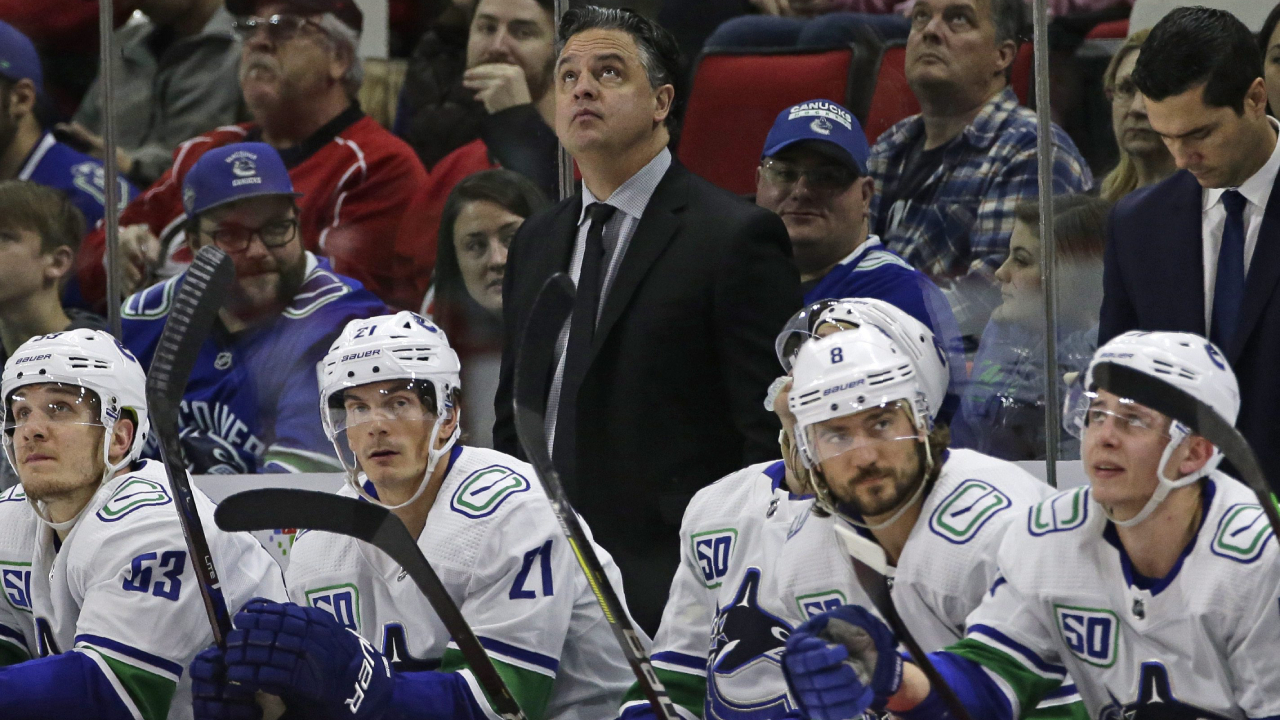VANCOUVER – The coronavirus pandemic could ravage the NHL economy as much as the global one. And the U.S. Federal Reserve isn’t putting together a rescue package for hockey’s billionaire owners and millionaire players.
It will be up to the league and its players association to negotiate a separate economic deal for the 2020-21 season because applying the terms of the Collective Bargaining Agreement and basing next year’s salary cap on this season’s stalled revenues could make it nearly impossible for NHL teams to open with full lineups.
The Vancouver Canucks were going to have to do some maneuvering this summer to re-sign its free agents based on this season’s $81.5-million salary cap. With the league shut down indefinitely since March 12 – and no guarantee of the playoff revenue windfall – the cap could plunge by $10-20 million based on current revenue formulas.
“A lot of teams would be over without adding new any new contracts (this summer),” Canucks general manager Jim Benning said. “We’re going to get it figured out, no matter what. They’ll have to come to some agreement.”
That’s a common belief around the NHL: that however this season ends, if it hasn’t already, owners and players will have to agree on a salary cap that makes sense given what everyone hopes is a once-in-a-lifetime shutdown of all professional sports this spring.
When the 2012 lockout by NHL owners shortened that season to 48 regular-season games, plus a full Stanley Cup tournament, the sides came to a side agreement for the 2013-14 salary cap, which was set at $64.3 million – the same upper limit as the previous 82-game season in 2011-12.
That flat cap wasn’t especially onerous because the players’ share of revenue declined to 50 per cent from 57 and teams were given leeway that included two “compliance buyouts,” which did not count against the salary cap.
That interesting wrinkle could be the best thing that comes out of this shutdown for the Canucks, whose cap pressure would be greatly alleviated simply by shedding Loui Eriksson’s $6-million annual charge.
The winger’s bonus-heavy $36-million contract is largely buyout proof. According to CapFriendly, a buyout this June would save the Canucks only $333,000 against Eriksson’s $6-million cap hit next season. But a compliance buyout, if the NHL and NHLPA agree on them, saves the entire $6 million.
That would make a massive difference to the Canucks. But before closet capologists get too excited, compliance buyouts are extremely unlikely unless the cap really is going down.
Only two weeks ago – or was it two years ago? – NHL deputy commissioner Bill Daly told general managers to expect a salary cap between $84- and $88.2-million next season. That range seems impossible now.
But will the cap be below this season’s $81.5 million?
If it is, the Canucks and a lot of other teams are in trouble.
Capfriendly shows Vancouver has $63.5 million committed next season for 15 players. This includes $6.35 million in “dead money” on Ryan Spooner’s buyout, commissioner Gary Bettman’s cap-recapture penalty on Robert Loungo, and Sven Baertschi potentially earning his NHL salary in the minors – again. Super-rookie Quinn Hughes’ $850,000 in bonuses will likely also be charged against next season’s cap.
If the ceiling is $81.5 million, the Canucks will have about $17 million to spend. The majority of that could be eaten up by re-signing goalie Jacob Markstrom ($3.67 million this season) and winger Tyler Toffoli ($4.6 million), unrestricted free agents who will be the team’s top priorities after this season.
Beyond them, the Canucks would like back UFA defenceman Chris Tanev ($4.45 million) and versatile middle-six forward Josh Leivo ($1.5 million), and they also have to deal with restricted free agents Troy Stecher ($2.33 million), Jake Virtanen ($1.25 million), Tyler Motte ($975,000) and Adam Gaudette ($917,000).
Now imagine if the salary cap, based on reduced revenue, is set at $71.5 million.
“That’s a big unknown,” assistant GM Chris Gear, who oversees the Canucks’ cap, told Sportsnet. “I am glad that we haven’t already signed any of our free agents. If we’d already made those commitments (before the NHL shutdown), we’d have less flexibility. I’m not sure you’re going to see anybody signing big contracts until we have a better idea what the cap is going to be.”
The Canucks may already have plans to reduce their payroll. Even without a compliance buyout, the team could approach Eriksson about agreeing to terminate his contract (like the Buffalo Sabres did in February with Zach Bogosian), unless the Canuck wants to finish his career in the minors.
And Benning said when he acquired Toffoli ahead of last month’s trade deadline that he would try to replace draft picks he surrendered in that deal (a second-rounder to Los Angeles) and the one last summer for J.T. Miller (a first-rounder to Tampa Bay, since traded to New Jersey) when this season ends. That would mean trading a significant player or two off his roster.
The Canucks could also look at trading spare defenceman Jordie Benn ($2 million) and retain salary to move veteran centre Brandon Sutter ($4.375 million).
[relatedlinks]









